On September 15, 1931, Dr. Deryl Hart and his colleagues proposed an innovative plan, one they believed would set Duke on a course to becoming a world-class leader in health care delivery, education and research. Duke leaders, like Dr. Wilburt Davison agreed, and the Duke Health Integrated Practice was born.
Today with nearly 1,500 members, we believe Dr. Hart would be proud of all we have accomplished. Thank you to our DHIP members, providers and staff for making your mark on the DHIP story. We are as optimistic as ever that the next chapters we write together will be even more successful.
“For 85 years, DHIP members have consistently excelled in providing highest-quality, patient-centered care, conducting cutting-edge research, and training exceptional health care leaders. Looking to the future, I am confident that our DHIP colleagues will build on this sterling record of success and contribute even more significantly to improving the health of the patients and communities we serve.”
-A. Eugene Washington, MD
Chancellor for Health Affairs, Duke University, President and CEO, Duke University Health System
1930
The Duke Department of Radiology was founded in 1930. The first chairman of the department was Dr. Robert J. Reeves who served from 1930 to 1965.
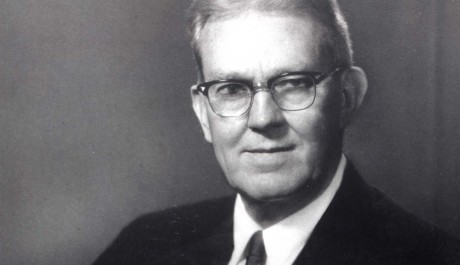
1930
The Duke Department of Surgery was founded in 1930. The first chairman was Dr. Julian Deryl Hart who served from 1930 to 1960.
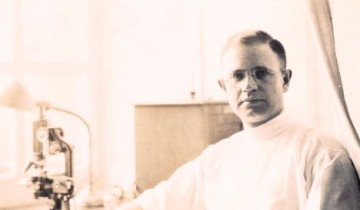
1930
The Duke Department of Medicine was founded in 1930. The first chairman of the department was Dr. Harold L. Amoss who served from 1930 to 1933.
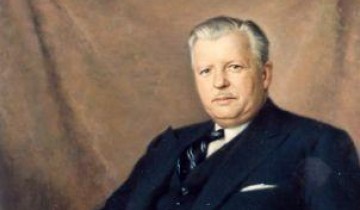
1930
The Duke Department of OB/GYN was founded in 1930. The first full-time chairman of the department was F. Bayard Carter who served from 1931-1964.
1930
Chairs of the Department of Pathology:
Wiley D. Forbus, 1930-1960
Thomas D. Kinney, 1960-1975
Robert D. Jennings, 1975-1989
John Shelburne, Interim, 1989-1991
Salvatore Pizzo, 1991-2015
David N. Howell, Interim, 2015-2016
Jiaoti Huang, 2016-present
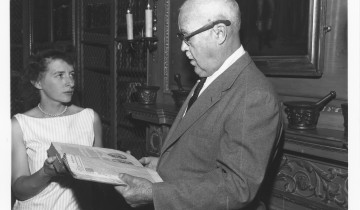
1930
The Duke Department of Pediatrics was founded in 1930. The founding chairman was Dr. Wilburt C. Davison who served from 1930 to 1954.

1931
The PDC was initiated by Dr. Julian Deryl Hart and Dr. Frederic Moir Hanes on September 15, 1931 as an independent, for-profit group practice affiliated with Duke Hospital and Duke University
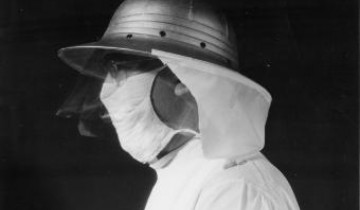
1936
Duke surgeons, led by Dr. J. Deryl Hart, pioneer the use of ultraviolet lamps in operating rooms to eliminate infectious organisms that cause post-operative Staph infections. This procedure dramatically reduces the number of infections and related deaths. Photo shows the clothing worn by doctors during surgery to protect from ultraviolent lights.

1937
Dr. Joseph Beard developed a vaccine against equine encephalomyelitis.
1937
Duke physicians establish the nation's first brain tumor program, launching what will become one of the world's foremost cancer programs.
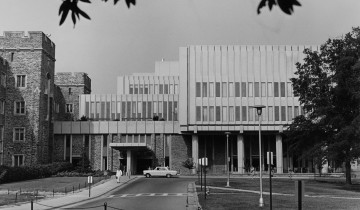
1937
Expansion of PDC facilities became necessary. The PDC divided itself between the medical specialties (pediatrics, medicine and psychiatry) and surgical specialties (OB/GYN, surgery, ophthalmology). These divisions permitted each to develop its clinics for both diagnosis and treatment.

1944
From 1944 to 1945, the 65th General Hospital, comprised of Duke physician faculty, alumni and current house staff, was stationed at Redgrave Park in Suffolk, England. There staff handled a constant stream of front-line casualties from heavy bomber crews, acute diseases and emergency cases, and acted as a specialty center for neurosurgery, thoracic and plastic surgery, burns, and hand injuries. The unit treated more than 17,000 patients during its time abroad. Learn more at: http://digitaldukemed.mc.duke.edu/sixty-fifth/introduction.html

1950
Duke pediatrician Jay Arena leads the push for drug companies to develop the child-proof safety cap for medicine bottles.
1951
The Duke Department of Psychiatry was established in 1951 and was called the Department of Neuropsychiatry. It was renamed the Department of Psychiatry in 1951, and in 1994 renamed the Department of Psychiatry and Behavioral Sciences.

1955
Psychiatrist Ewald W. Busse establishes the Duke University Center for Aging, the first research center of its kind in the nation. Now the oldest continuously running aging center in the United States, the Duke Center for Aging has pioneered long-term studies of health problems among the elderly.
1957
Buildings housing outpatient and PDC clinics, including Hanes and Reed private floors and operating rooms, opened.
1959
Duke physicians develop a machine that lowers patients' blood temperatures below 68 degrees Fahrenheit and is the first to place a patient under this deep hypothermia during open-heart surgery.

1965
The Duke Department of Ophthalmology was founded in 1965. It had been a division of the Department of Surgery since 1930. The founding chairman was Dr. Joseph A.C. Wadsworth who served from 1965-1978.

1966
The Duke Department of Community and Family Medicine was founded in 1966. The first chairman of the department was Dr. E. Harvey Estes who served from 1966 to 1985. Click to learn more about the origins of the department.
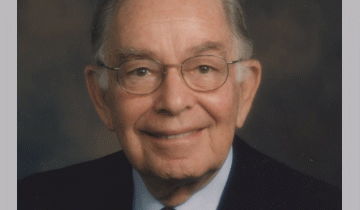
1970
The Duke Department of Anesthesiology was founded in 1970. The first chairman was Merel H. Harmel who served from 1970-1983.
1972
The PDC, with its 255 physician partners, established a formal operating agreement that outlines the benefits that the PDC and University provide to one another, and establishes a financial structure that advances medical teaching and research. This Operating Agreement has been amended but is largely still in place today.
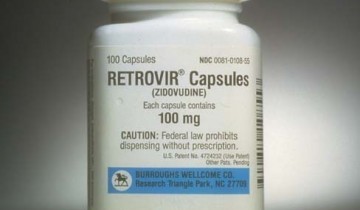
1985
Duke physicians conduct the first human clinical trials of AZT, the first drug to offer a substantial improvement in quality of life for AIDS patients.

1990
Duke researchers discover a gene that increases people's risk of developing the most common kind of Alzheimer's disease, showing for the first time that it can be inherited.

1991
The Duke Department of Radiation Oncology was founded in 1991. The first chairman of the department was Dr. Leonard Prosnitz who served from 1991-1996.

1992
Duke develops the nation's first outpatient bone marrow transplantation program. READ MORE
1995
The PDC eliminated the two divisions and became a centralized group practice and expanded the Board of Managers to include at-large physician partners, in addition to department chairs.
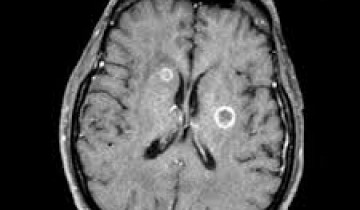
1995
Duke scientists generate the first clear images of the human lung using magnetic resonance imaging (MRI). The new technique could greatly aid diagnosis and treatment of lung disorders such as emphysema and asthma
1997
The PDC became a professional limited liability partnership with approximately 830 partners.

2009
PDC elects its first President, Dr. Carl Ravin to one five-year term.

2009
Dermatology became a department at Duke in 2009. It had been a division of the Department of Medicine since 1946. Russell P. Hall is the current and founding chair of the department.

2010
The Duke Department of Orthopaedic Surgery was founded in 2010. Previously it was been a division of the Department of Surgery since in 1930. WATCH TO LEARN MORE

2013
The Duke Department of Neurology was founded in 2013. The current and founding chairman of the department is Dr. Richard O'Brien.

2014
Dr. Mark Newman, former chair of the Department of Anesthesiology, is elected PDC President.
2015
PDC produces a strategic plan that provides direction and focus for the next three years. The plan represents a consolidation of the priorities and strategies detailed in the strategic plans of the 15 clinical departments, and is intended to create stronger alignment with the Duke University Health System. Learn more about the PDC Strategic Plan: http://pdc.dukemedicine.org/about-us/pdc-strategic-plan


